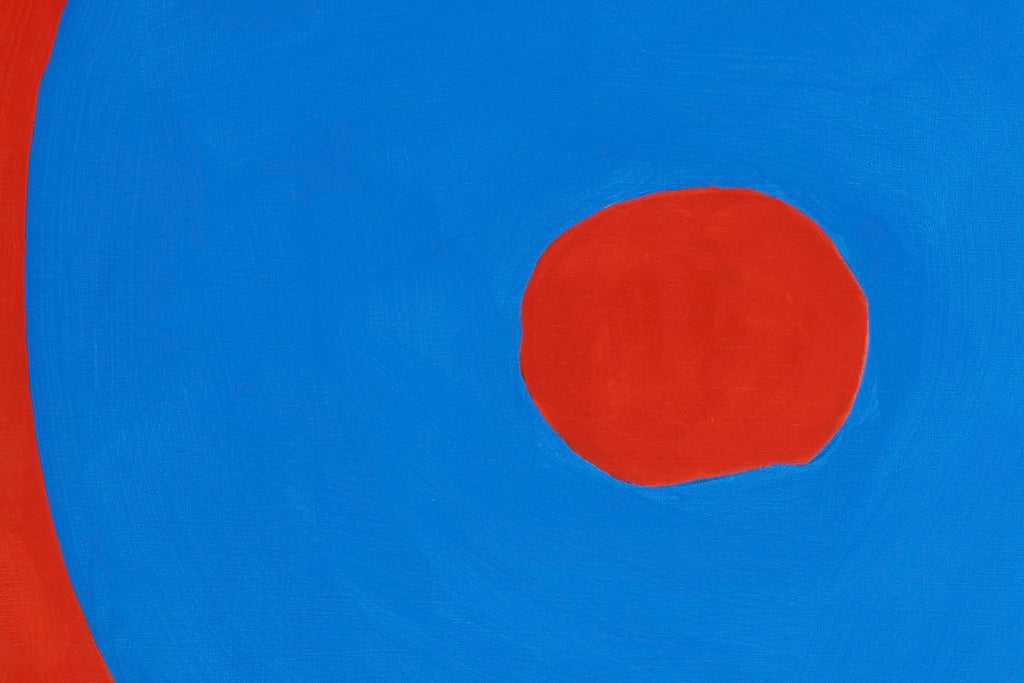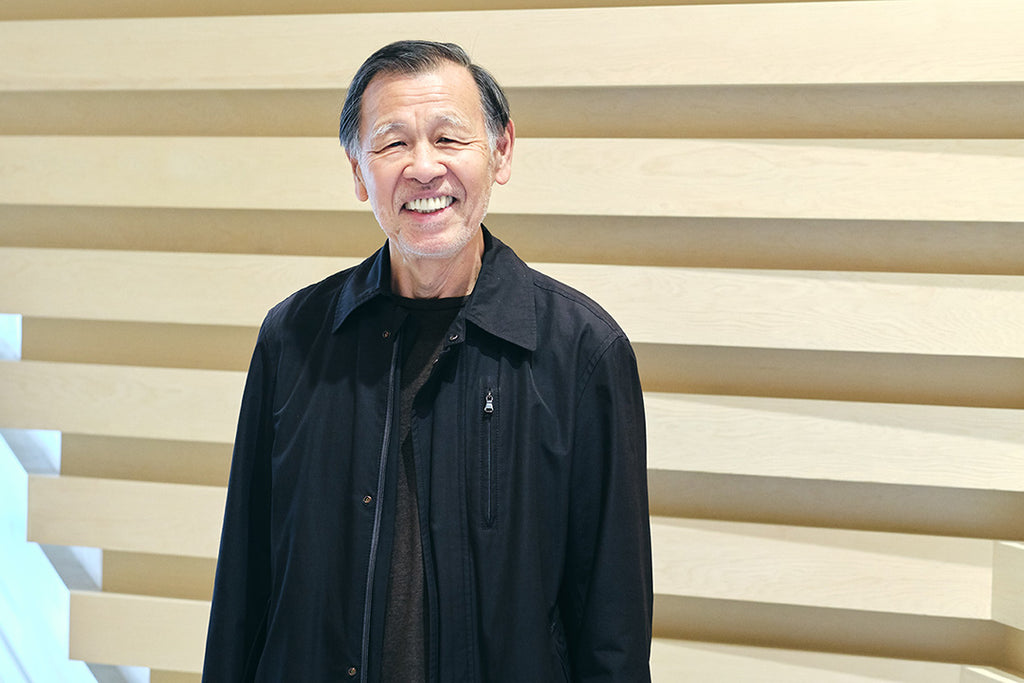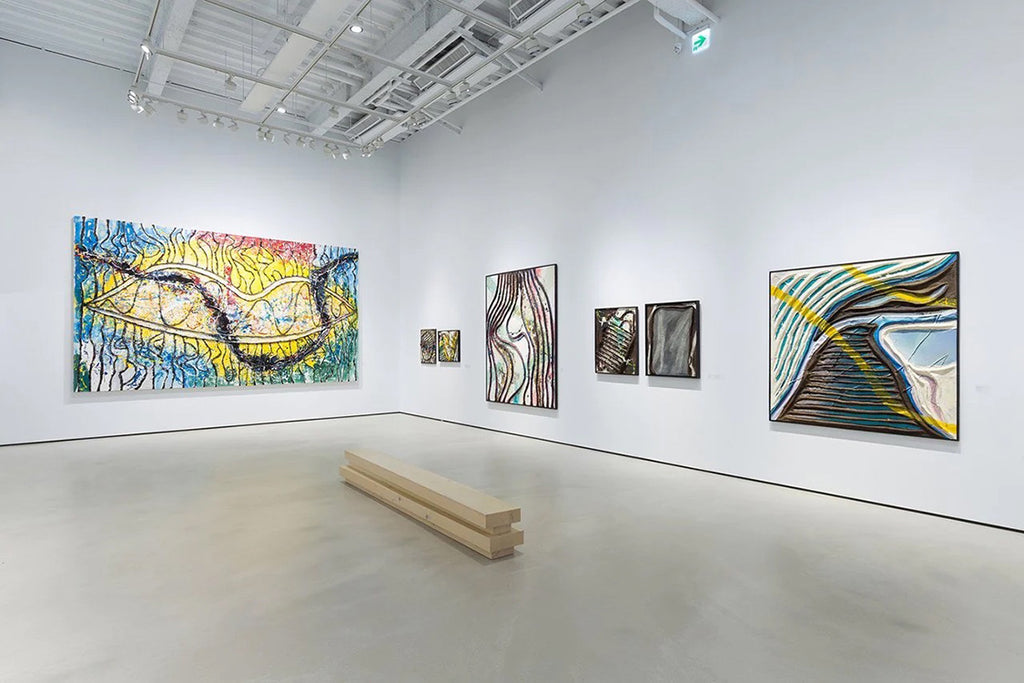ARTICLES
Musée Soulages Exhibition “Gutai, l’espace et le temps” (Gutai, Space and Time) and its Significance
A New Appreciation Contemporary Japanese and Asian Art
4/23

Installation view of the exhibition "Gutai" of the Musée Soulages
In our ongoing series, we present the digital archive of the book 'A New Appreciation Contemporary Japanese and Asian Art' This book delves into internationally acclaimed artists and the dynamics of the Asian art market. The fourth installment introduces Gutai Art Association.
“Gutai” exhibition was fulfilled by aspiration of Pirre Soulages
Yutaka Mino
Director of Hyogo Prefectural Museum of Art, Kobe
“Gutai” exhibition was fulfilled by aspiration of Pirre Soulages
Exhibition “Gutai, l’espace et le temps” (Gutai, Time and Space) was held at the Musée Soulages Rodez, Aveyron, in France from 7th July to 4th November, 2018. This exhibition was realized in accordance with strong request by Pierre Soulages, known as ‘painter of black’ and hailed from Rodez. Soulages visited Japan for the first time in 1958 and has since then visited Japan a number of times: it is safe to say that he is the artist who feels deep kinship with Japan. In addition, Aveyron and Hyogo have had a twin prefecture relationship since 2000, developed exchanges in various fields including culture, education, and economics. As a part of cultural exchange, 16 representative works of Gutai was lent by Hyogo Prefectural Museum of Art for this occasion. Hyogo Prefectural Museum of Art has focused on “Gutai Art Association” as the important artist collective originated in Hyogo and has collected their exquisite works staging “Yamamura Collection” as its core, bearing the name of the famous collector from Nishinomiya-city as well as the president of the company “Yamamura Glass”, Tokutaro Yamamura,. Gutai activities, spanning 18 years from the mid-1950s to the early 1970s, can generally be divided into three periods, the early, middle, and late periods, and works that we are exhibiting this time around come from each of those various periods and in various forms. Some highlighted the early period’s intense action and materialism, we also have works from the middle period, which emphasize painting quality, and lastly we have works based on geometric composition, from the later period. Through those wide range of the works, the exhibition “Gutai, l’espace et le temps” was able to trace successfully the expressional transition of “Gutai”. The inaugural party that I also attended was greatly broad up in the local medias. Regardless of its small population of Rodez, approximately 24,000, this exhibition recorded more than 60,000 visitors.

Yutaka Mino, Director of Hyogo prefectural museum of art, adressing at the opening of the exhibition Gutai
The year 1950, 9 years after the end of the war---Gutai Art Association: the innovative art collective originated in Ashiya-city
The “Gutai Art Association” was founded in Ashiya city, Hyogo Prefecture, in 1954, nine years after the war, when Japan was recovering its de facto sovereignty and finally emerging from post.war turmoil. With society showing signs of revival, new movements also arose one after the other in the field of the art. Among them, the “Gutai Art Association” which still attracts great interest both in Japan and overseas. In the magazine he launched the following year, “Gutai” Jiro Yoshihara, the spiritual of support of its members and leader of the Gutai association, posited “(...) contemporary art acts as a free space providing maximum release for people to survive the trying conditions of contemporary life. It is our deep-seated belief that creativity in a free space will truly contribute to the development of the human race.” as “Gutai’s” philosophy. Also, that, “It is our desire to embody the fact that our sprit is free.” in de.scribing “Gutai” as the origin of the group’s name. Following from this principle, “Gutai” to encapsulate a place of creative freedom for its members.
Mentally based on “Don’t copy Anyone!”, the slogan by Jiro Yoshihara, theoretically on continuous evaluation by Michel Tapi.
The slogan by Yoshihara, “Don’t copy anyone!”, seems to have wings among researchers. In fact, radical and new attempts which broke the mold of art were frequently practiced on pictorial expression. Those attempts were based on the indication by Yoshihara, “think about your unique way of expression”. In 1957, a fortuitous encounter with French art critic Michel Tapi. brought about great progress in “Gutai” creativity. Tapi.’s praise of “Gutai” was not only theoretical support for the activity, but also gave great confidence to its members. Following that, “Gutai” expanded its activities to France, Italy and the United States, eventually becoming internationally recognized. Later on, in the mid-1960s, Allan Kaprow labelled Gutai the precursor to Happenings, further pointing the spotlight on Gutai. The fact that activities from the art groups which were emerging from the area between Osaka and Hyogo, known as Hanshin-kan, were strangely keeping with trends in the world of art, speaks not only to the foresight Yoshihara and of the other members, but also of this region’s rich cultural roots (background) that foster these kinds of free art movements.

Installation view of the exhibition "Gutai" of the Musée Soulages
Activities of Gutai ー Ongoing High-Profiles Worldwide
On the article by Alfred Pacquement, in the exhibition catalogue “Gutai: l'extraordinaire Intuition” (held at Centre Pompidou, Paris, 1986), he states ‘As far as this exhibition goes, it is Westerners who copy the innovation from far east Japan without knowing its origin. How did Gutai generate this kind of brilliant innovation? Perhaps the atmosphere that was free from any occidental systems was absolutely essential.’ The reason why Gutai has been recognized and evaluated worldwide is in its originality, which is not under the influence of overseas. It is no doubt that the demand of Gutai will increase in the time to come. Gutai forms the core part of the collection of Hyogo Prefectural Museum of Art. Together with ‘Ashiya City Museum of Art and History’ and ‘Nakanoshima Museum of Art, Osaka’ which is under construction, three big hubs for Gutai research will be ready. By reinforcing of further collaboration, we continue to disseminate illustrious achievement of Gutai both at home and abroad.
Yutaka MINO

Born in Kanazawa. After graduating from Keio University, completed doctoral program at Harvard University Graduate School of Art History (Ph.D in Literature). Successively held division head of Oriental art at the museums in Montreal (Canada), Indianapolis and Chicago (USA). He assumed fist director of Osaka City Museum of Fine Art (1996) and The 21st Century Museum of Contemporary Art, Kanazawa (2004), concurrently the deputy mayor of Kanazawa-city (2005). After holding senior positions like specially appointed director at The 21st Century Museum of Contemporary Art, Kanazawa; and director emeritus at Osaka City Museum of Fine Art simultaneously in April 2007, he assumed the position of Vice President of Sotheby’s North America Headquarters in May in the same year. Currently he is director of Hyogo Prefectural Museum of Art (since April, 2010). His main publications include “Hyper Revolution of Museum: Challenge of the 21st Museum of Contemporary Art, Kanazawa”, “Hyper Revolution of Marketing: How Popular Museum increases visitors” (KADOKAWA Publishing), and many others.
Book Information
Title: A New Appreciation Contemporary Japanese and Asian Art (English Edition)
Publisher : Whitestone Co., Ltd.
Release Date : February 26, 2020
*Information in this article is at the time of publication.



